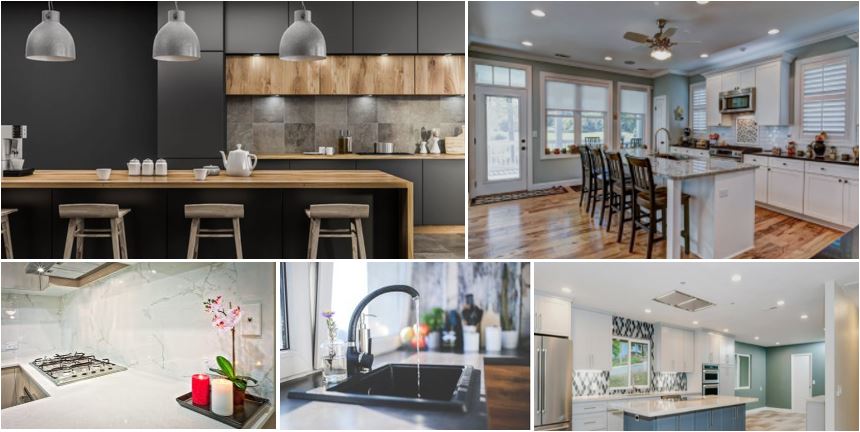
Kitchens are one of the most significant parts of any home renovation. They demand meticulous planning, a clear vision, and careful execution. Whether you’re aiming to enhance functionality, revamp the design, or simply refresh the space, implementing the right plan is crucial. Working with kitchen renovation contractors can streamline the process, helping you create a space that adds value to your home and meets your needs.
This article provides a comprehensive step-by-step guide to help you navigate your kitchen renovation project smoothly.
1. Budget and Define Your Vision
The first step in any renovation project is setting a clear budget. A well-defined budget helps prevent overspending and provides direction throughout the renovation. Consider what you need: Do you require new appliances? Are your cabinets in need of replacement? Also, think about the materials you want to use—some might be expensive, but there could be more cost-effective alternatives that still deliver the look you desire.
Once your budget is set, define your vision. What do you want from your new kitchen? Whether you prefer a sleek, modern look or a cozy, traditional style, your kitchen should reflect both aesthetics and practicality. Think about your storage needs and whether your current kitchen layout could be improved. Inspiration can be found in design magazines and on kitchen renovation websites, helping you refine your ideas.
2. Plan the Layout
Designing a new kitchen layout is one of the most critical aspects of a renovation. Start by evaluating your current layout: Does it meet your needs, or could it be improved? Popular kitchen layouts include U-shaped, L-shaped, and galley designs, with open-plan layouts becoming increasingly popular. Each offers different benefits depending on the size and shape of your kitchen.
This is a stage where hiring kitchen renovation contractors can be highly beneficial. These professionals can assess your current space and help you decide on a layout that makes the most sense for your home.
3. Choose Materials and Finishes
The materials and finishes you choose will give your kitchen its personality and set the tone for the entire space. From countertops and cabinets to flooring and backsplashes, your choices will frame the overall aesthetic appeal of the room.
When selecting materials, consider durability, sustainability, and ease of maintenance. Quartz, granite, and marble are popular choices for countertops, while recycled glass or bamboo can appeal to eco-conscious homeowners. For cabinets, solid wood offers a timeless look, but more affordable options like laminate or MDF might also meet your needs.
4. Choose Your Appliances and Fixtures
Appliances play a crucial role in your kitchen, influencing both functionality and energy efficiency. Consider investing in high-efficiency models that save on electricity and water, making them a smart financial choice for a newly renovated kitchen. Stainless steel remains a popular choice due to its clean look and durability.
5. Hire a Contractor and Get Permits
If your renovation involves structural changes, plumbing, or electrical work, it’s advisable to hire a kitchen renovation contractor. Contractors coordinate subcontractors, ensure that work is up to code, and can streamline the entire renovation process.
If your renovation requires permits, contractors can handle this for you, ensuring that your project complies with local safety regulations. For example, suppose your renovation is extensive enough to require permits. In that case, kitchen renovation companies can get them for you and ensure that your project is at par with safety regulations in the area. Hiring a contractor not only provides peace of mind but also helps to avoid many of the logistical headaches that can arise during a renovation.
6. Installation of New Elements
Once the old materials have been removed and the space prepared, it’s time for the installation phase. This includes installing new cabinetry, countertops, appliances, and fixtures according to your design plan.
If you’ve hired local kitchen renovation contractors, they will oversee the work of carpenters, electricians, and plumbers to ensure everything is installed correctly. This phase is critical as it turns your vision into reality.
7. Finishing Touches
The final phase of your kitchen renovation involves adding the finishing touches. This includes installing cabinet hardware, light fixtures, and any decorative elements you’ve chosen, such as open shelving, artwork, or plants. These details bring the entire design together, making the space uniquely yours.
During this phase, conduct a final walkthrough to ensure that everything is functioning correctly and meets your expectations.
Conclusion
All the time and effort invested in your kitchen renovation will pay off when you see the transformation of your space. A well-renovated kitchen not only adds value to your home but also enhances your day-to-day living experience. Whether you’re hosting intimate dinners or preparing everyday meals, your new kitchen will reflect your style and meet all your functional needs. While kitchen renovation can be challenging, following this step-by-step checklist and hiring professionals where necessary can help ensure a successful transformation, bringing your dream kitchen to life.
